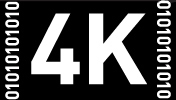

Allied is a romantic spy thriller set during World War II that tells the tale of a Canadian airman working for British intelligence (Brad Pitt) and a French resistance fighter (Marion Cotillard) who fall in love during an assassination mission in German-occupied Casablanca. Between the well-plotted script by Steven Knight (Dirty Pretty Things, Eastern Promises, Locke), the beauty and star-caliber of the two leads, and the period costumes and hair styles, all the ingredients are present for a grand wartime suspense picture with a deeply felt love story at its center—something along the lines of Alfred Hitchcock’s Notorious. All that’s missing from this promising recipe is the right cinematic chef to turn it into a sumptuous movie meal. But in the hands of director Robert Zemeckis what should come out a rich and filling concoction ends up as common and forgettable as a microwaved sausage & cheese croissant.
Zemeckis (Back to the Future, Forrest Gump, Cast Away) might seem an ideal filmmaker to follow in Hitchcock’s shoes. Few contemporary directors have embraced the technology of motion pictures to the degree that fascinated the great British master. But one only need look as far as Zemeckis’ actual Hitchcock homage—the woefully unsuspenseful 2000 thriller What Lies Beneath—to see the difference between high art and low artifice. Comparing Allied to any of Steven Spielberg’s recent WWII films illustrates the same contrast. Beginning with the first sequence of Pitt parachuting into the Moroccan desert, everything about this picture looks counterfeit. From the museum-quality costumes every character wears, which betray no signs of dirt, sweat, dust, oil, or any of the blemishes we would expect to accumulate in these situations, to the computer-generated backdrops and skylines the actors constantly gaze off at or stand in front of, everything in this movie looks way too perfect. Even Pitt’s dependably gorgeous face appears treated with Botox or possibly some kind of digital de-ageing technique that creates an unnatural appearance.
For the past several years I’ve tried to understand why some veteran filmmakers’ adoption of digital cinematography has resulted in exquisite period renderings—David Fincher and Harris Savides’ Zodiac (2007), Mike Leigh and Dick Pope’s Mr. Turner (2014), Woody Allen and Vittorio Storaro’s Café Society (2016)—while others churn out off-putting phoniness—Michael Mann and Dante Spinotti’s Public Enemies (2009), Darren Aronofsky and Matthew Libatique’s Noah (2014), Warren Beatty and Caleb Deschanel’s Rules Don’t Apply (2016). Looking at Zemeckis’ latest picture clears up the confusion. Rather than the choice of format used to capture images, it is the total embrace of all modern digital techniques together that lead to the synthetic milieu of so many major Hollywood releases. The inorganic qualities of digitally rendered environments—like Allied’s perfectly lit, impossibly detail-rich nighttime skylines and a sandstorm that we can magically see our characters through—are all the more out of place within the context of period pieces that try to look authentically of their time.
From Who Framed Roger Rabbit to the Back to the Future sequels to Forest Gump, to The Polar Express, Zemeckis has demonstrated a greater interest in pushing the technological envelope than in exploring the human condition with any subtlety. With rare exceptions like Flight, he’s unabashedly a showman more than an artist. There are several impressively staged sequences in Allied—a lovemaking scene in a car, a birth scene set during an air raid, and several emotional sacrifices shot with operatic grandeur. But unlike Hitchcock, who’s elaborate camera moves pull us into the action, Zemeckis’ ornately crafted set-pieces draw attention to themselves and away from the story. Even on first viewing of most Zemeckis movies, we find ourselves marveling at the efforts of the filmmakers rather than connecting with the characters on screen.
The major episode in Allied that succeeds best is the birth of the main characters’ child. It’s the centerpiece of the love story, and we’re emotionally engaged with the heroes because of Cotillard’s fine performance. One of the greatest working actresses, Cotillard holds up more than her half of this picture. Granted, she has the more complexly written character, but it’s still surprising how ineffective Pitt is in this film. When you consider how much the actor usually succeeds at bringing warmth and humanity to square-jawed, tightlipped roles like this one, it’s bizarre how dour and lifeless his fighter pilot hero comes off. Despite the rumours that the two stars had an off-screen affair while shooting this movie, little heat translates to the screen. Do the two leads actually lack cinematic chemistry or does Zemeckis’ technical precision simply leave no room for any real human expression to flourish? Either way, the emotional core of this well-structured narrative is insufficient to hold it all together.




